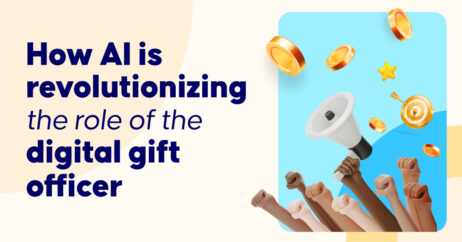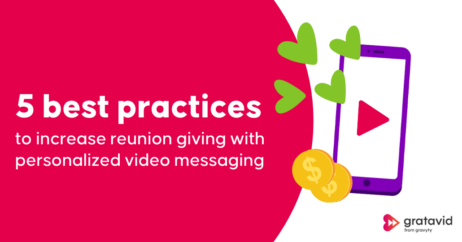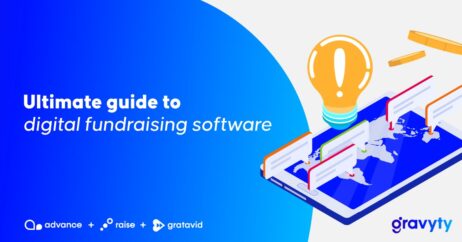Can humans effectively manage a nonprofit’s relationship with its donors?

Is there a limit to the amount of love one can give? For those with children, kids often ask their parents if they love either one of them less, and—of course—the answer is a resolute “no” because love is not a finite resource. Yet that is exactly what many organizations communicate to the majority of their donors.
Consider this: if a friend gave you a box of chocolates on Valentine’s Day and you sent her a form letter with an electronic signature at the bottom as a thank you, she would likely quickly realize how much (or little) her box of chocolates meant to you. She’d probably reconsider that gift the following year, too.
Each donation from a donor is an expression of care, love, and appreciation for the mission of the organization and should be treated as such. Just like a gift from a friend, that donation deserves a notecard, a phone call, or a highly personalized email to let the donor know their gift is valued and appreciated.
Donor relationship management for nonprofit fundraisers with limited resources
Unfortunately for most organizations, donor relationship management is stilted by the size of the fundraising teams. As a 2017 EAB research study found, fundraisers are not very effective at managing large numbers of donor relationships.
This could be related to their human nature. According to British anthropologist Robin Dunbar, based on their brain size, humans can only effectively maintain relationships with an average of 150 people at a time.
Impact of poor donor relationship management
In nonprofit fundraising, it is thus generally understood that the finite resource of personalized attention is reserved for donors who either can or do give at the highest levels. While the donation level varies by organization, a “manageable” portfolio of major donors falls somewhere between 50 and 150. If a donor doesn’t fit the giving criteria (or the potential to give at this level), they are cast to the outer rims of an organization’s relationship circles. What happens there depends on the donor, but most don’t stay long.
Roger Craver, the author of Retention Fundraising, lists the most common reasons a donor stops giving to a charity:
- They don’t understand why an organization needs their money and how it ultimately used it or just don’t recall why they supported it in the first place
- They never got a thank you (now that’s just bad manners!)
- The organization’s poor service or communication, such as a misspelling in their name or a lack of response to a complaint made them feel underappreciated
- They have found another cause more deserving (read: someone communicated a stronger case for support)
- They could no longer afford to give
- They died
Except for the last two, these are all things organizations can impact through regular, appropriate, and personalized communication with donors.
Personalized outreach for strong donor relationships
According to The New York Times, “Transforming Partnerships With Major Donors,” a report by the Leadership Story Lab describes precisely this.
This report found that donors “would prefer that nonprofit groups updated their approaches and made their pitches more personalized.” The author of the report stated that “gift officers didn’t always know the potential donor’s story and, instead of asking specific questions, led with a pitch about the greatness of their organization.”
Similar findings came from the 2018 U.S. Trust Study of High Net Worth Philanthropy, in which “wealthy donors said that they stopped giving to at least one organization last year, citing reasons that included receiving too frequent solicitations from the nonprofit organization and believing that the organization was not effective or did not sufficiently communicate its effectiveness.”
Building a strong donor relationship strategy
Just as love is not a finite resource, neither should the organizations’ ability to build and maintain relationships with their supporters be limited to a number of relationships their human fundraisers can effectively manage. Donors at lower levels of the giving pyramid often work their way up to higher levels of giving over time, and donors who give regularly to causes they care about often leave sizable planned gifts to those organizations.
In today’s hyper-personalized world, where Amazon knows what needs restocking in the pantry, Netflix recommends just the right title for family movie night, and Facebook helps remind you that you looked at a pair of fur-lined boots once, donors will, at best, ignore and, at worst, take offense to a generic solicitation letter or a call.
Organizations must evolve beyond current models in which only the top few donors are treated as friends and find ways to give each donor the personal attention they deserve. Their future depends on it.
Bulletproof your nonprofit’s donor relationship management strategy with AI-enabled fundraising tools to save your fundraisers’ time and personalize donor engagement. Let’s talk.




